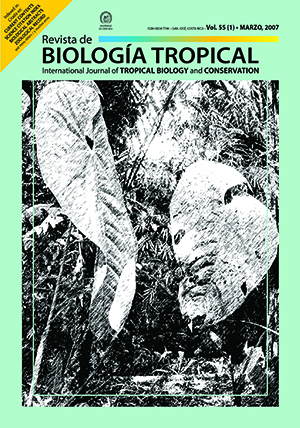Abstract
Mating behavior has been described for very few species of penaeoid shrimps. We describe some of the environmental conditions under which mating of Litopenaeus vannamei took place in the ocean, as inferred by the presence of attached spermatophores on the thelycum of females, combined with the presence of mature males with empty ampulla terminalis, both evidence of recent copulation. Out of a total of twelve 24 hr samplings on board the research vessel B/O EL PUMA, one was selected to examine mating. There were four periods of observation. The highest frequency of females with attached spermatophores were found during the daytime whilst the lowest was registered during the night. Females with attached spermatophore were mostly at stages IV and V of ovarian maturity and fell within the 30 - 50 mm of C.L. range. Copulating male size ranged between 30 and 40 mm of C.L. and there was a close relation between the percentage of mating females and males. Male to female ratio varied throughout the sampling period but it was never 1:1. The female mean size was, in all cases, bigger than the male mean size. Among the environmental factors, salinity and oxygen varied very slightly throughout the sampling period; temperature variation was more pronounced and those changes were attributed to the tidal oscillation.##plugins.facebook.comentarios##

This work is licensed under a Creative Commons Attribution 4.0 International License.
Copyright (c) 2007 Revista de Biología Tropical
Downloads
Download data is not yet available.






